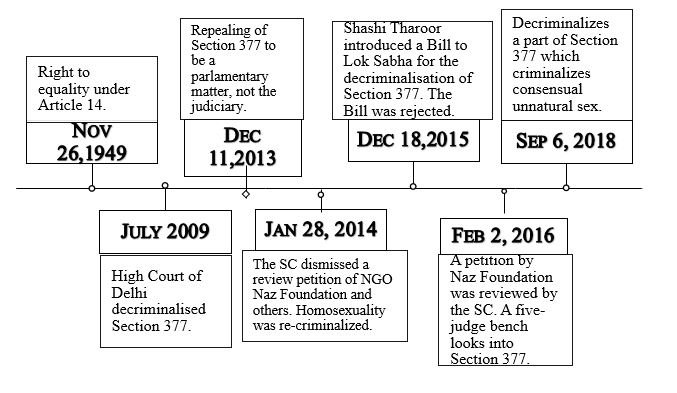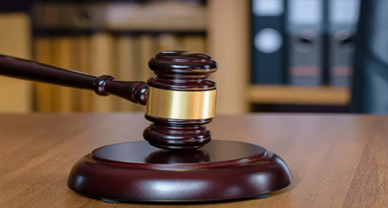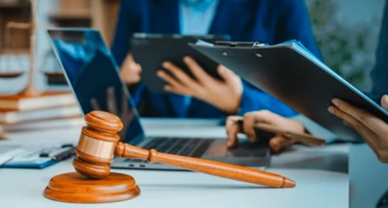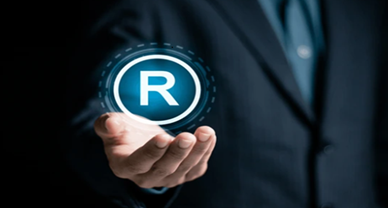Does law impact society, or does society impact LAW? – Right to Privacy
Introduction
One constitutional aspect that is said to be the underlying theme of the Indian Constitution is that of “inclusiveness”. We believe the Indian Constitution reflects values deeply ingrained in Indian society, nurtured over several generations. Indian society traditionally displays inclusiveness in almost every aspect of life.
The relation between law and social transformation has no correct answer, but one can surely choose a side. The main question is, can the law keep up with societal changes?[1]
Law is a system of rules and guidelines enforced to govern behavior.
In modern times, the rule of law is operating as a disciplinary measure, as positive enforcement of a change, and as a creative catalyst so that society drives itself forward in a more constructive way. Even though law acts as an instrument of social change, it can’t be confined to only one or two aspects, as society has a deep interlinking to law. However, I intend to take broad examples of how social transformation has had an enormous impact on law and how this has affected the public. The two topics are LGBTQ Rights and the Right to privacy. All the rights that we know today and associate with society come from judgments. Judgments resulting from a fight fought for over two decades by community members, NGOs, lawyers, and civil societies.
- Contents
- LGBTQ RIGHTS
LGBTQ– the first four letters have the standard abbreviation “lesbian, gay, bisexual and transgender.” The Q can stand for “questioning,” as in still exploring sexuality or “queer.”[2]
- Section 377 in The Indian Penal Code Unnatural offenses- “Whoever voluntarily has carnal intercourse against the order of nature with any man, woman or animal, shall be punished with, or with imprisonment of either description for a term which may extend to ten years, and shall also be liable to fine.“[3]
TIMELINE OF LGBTQ RIGHTS IN INDIA
- 2009
In 2001 section 377 was first challenged by NGO Naz Foundation and AIDA Bedhbhav Virodh Andolan in Delhi High Court 2001.However, both the petitions were dismissed by the High Court. Naz Foundation v. Government of NTC Delhi[4][5], or prominently known as Naz Judgment, is a 2009 judgment by the Delhi High Court. In this judgment, interestingly, Delhi High Court announced Section 377 to be illegal.[6]
Naz, an NGO situated in Delhi, documented a PIL to the Delhi High Court and claimed Section 377 of the Indian Penal Code to be unconstitutional. They have been at the front line in the fight for the decriminalization of section 377. In 2009 they effectively got the Courts to pronounce Section 377 unlawful, abusing Articles 14, 15, and 16 of the Indian Constitution. Advocates in India have hailed this choice as a significant triumph for LGBT Rights and the right to sufficient wellbeing, including information for HIV/AIDS treatment in India. The reasoning of the Court makes the basic linkages between non-discrimination and access to sufficient medical services and how sigma and underestimation can block access to rights. The Secretary of the Department of AIDS Control, K. Sujatha Rao, has proclaimed that the decision is expected to increase the effectiveness of prevention programs and has acclaimed the Court for “confirming that essential freedoms of sexual minorities can’t be bested by ambiguous ideas of culture and ethical quality.”
- 2014
2013 was a very dark year for human rights and LGBT rights in India because the Supreme Court of India delivered Suresh Kumar Koushal vs. Union of India[7], where homosexuality was re-criminalized. The darkness was short-lived because the Supreme Court delivered the National Legal Services Authority vs. Union of India or NALSA judgment.
Without precedent for history, transsexual individuals got lawful acknowledgment. All the Fundamental Rights were granted to them, and they were given the personality of the Third Gender. The court laid an exhaustive arrangement of rules that each State should adhere to bring Transgenders into open arenas and cure their minimization.
- 2018
Bench strength 5
Laws- Article 14, Article 15, Article 19, and Article 21 of the Constitution
Navtej Singh Johar v. Union of India[8], popularly known as the groundbreaking judgment, decriminalized homosexuality in India. This judgment was delivered by the Supreme Court of India resulted in multiple Public Interest Litigations (PIL) that different groups of the LGBTQ+ community have filed.
Right to Privacy
According to the Black’s Law Dictionary, the Right to Privacy means “right to be let alone,” the right of the person to be free from any unwarranted interference.[9] The establishment of LGBTQ Rights in 2014 led up to the formation of the Right to Privacy. The topic of privacy as a right acquired importance when the public authority submitted to the Supreme Court (SC) in July 2015 that there is no fundamental right to privacy. The Supreme Court, on its part, framed a bench of five judges, to hear the submissions on this ground and convey a judgment that settles the issue.[10]
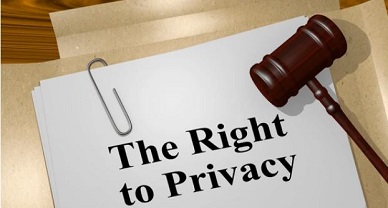
TIMELINE OF RIGHT TO PRIVACY IN INDIA
- Jul 7: The branch size increases from Three judges to Five judges on the call of CJI. To discuss the issues caused by Aadhar.
- Jul 18:Five-judge constitution bench decides to set up a nine-judge bench to decide whether the right to privacy can be declared a fundamental right under the Constitution.[11]
- Jul 19:SC declared the right to privacy can’t be absolute, may be regulated. The Centre favors rights t privacy to not be a fundamental right.
Jul 27: Maharashtra government tells SC that privacy is not a “standalone” right, but it is rather a concept.
- Aug 1:SC states there must be “overarching” guidelines to protect an individual’s private information in the public domain.
- Aug 2:SC acknowledges that the protection of the concept of privacy in this technological era was a “losing battle.“
- Aug 24:SC declares the Right to Privacy as a fundamental right under the Indian Constitution.
The concept mainly dealt with individual privacy and needed protection before the Justice (Retd) K S Puttaswamy vs. Union of India[12] , right to privacy was not considered a fundamental right. Later the expansion of Article 21 of the Constitution of India, which grants the society Right to Life and Liberty, includes the Right to Privacy.
The Court declared that like the right to life and individual freedom, the right to protection might be restricted by a strategy set up by law. The invasion of privacy should be through a reasonable, sensible, and just methodology. It should meet the three states of lawfulness, the existence of a legitimate state aim, and proportionality. Genuine state aims would incorporate public safety concerns, preventing and investigating wrongdoing, and preventing the dissemination of social welfare benefits.
The right to privacy got extended to individuals irrespective of their gender and sex. Recognition of Privacy was provided for members of the LGBTQ+ community.
Analysis
The above-mentioned cases are just a few that resonated with me; there are many more cases, lawyers, NGOs, and activists who work relentlessly. We can clearly say that the impact of society on law is not sudden. However, the impact has been more prominent and accountable in being a constructive change in society in the recent. Revolutionary thinkers and activists who questioned law were present across the world over a considerable period. Leaders like Martin Luther King Jr, who, through his activism, played a major role in ending the legal segregation of African American citizens, as well as creating the Civil Rights Act of 1964 and the Voting Rights Act of 1965. He also received the Nobel Peace Prize in 1964, among several other honors. [13]In India, the perfect example of judicial activism is the leading judgment of Maneka Gandhi vs. Union of India of 1987.[14]
Only the passing of bill or law is not necessary; we need to put in all efforts to bring the law to implementation. Inclusiveness in the working environment has been a robust plan to be accomplished by most associations. Lawfully India has made many strides to recognize the freedoms of the LGBT Community. Discrimination and the fear of segregation is a major worry among the minorities in the work environment. They get disregarded and abused by different workers for their sexual inclination.
In many cases, progress has been made in this area, associations have created numerous approaches to ensure the freedoms of LGBT representatives in the working environment. Worldwide organizations like YouTube, Microsoft, Sodexo India, IBM, Infosys, and Barclays, among others, invited the LGBTQ+ cause in India as allies, yet as appropriate partners. [15]There are numerous ways by which discrimination can be eliminated from the work environment. By instructing the representatives about the incorporation of workers to acknowledge the sexual orientation inclination of LGBT workers.[16] Changes should be made to the Equal Remuneration Act and Maternity Benefits Act to consider LGBTQ+ individuals inside the working environment. Equivalent compensation should be paid to all, independent of their sex character or sexual direction.
The Court held that privacy is an attribute of human dignity after a long fight concerning LGBTQ+ Society by various NGOs and activists. It also observed that the right to privacy is primarily derived from Article 21. However, it is also supplemented by the values enshrined in other fundamental rights. Therefore, it advocated for a holistic view of fundamental rights. It safeguards one’s freedom to make personal choices and control significant aspects of their life. In addition, it noted that personal intimacies (marriage, procreation, and family), including sexual orientation, are at the core of an individual’s dignity.[17]
Therefore, the right to privacy and sexual orientation are now at the core of the right to equality, non-discrimination, and life.
Even The Court acknowledged that certain rights are not bestowed by the State but are inhered by a person by virtue of being human. All individuals have natural rights, irrespective of their class, economic status, gender, or sexual orientation. Significantly, the right to self-determine sexual orientation also recognized as a natural right.[18]As illustrated above with examples of case laws and acts, it is evident that social transformation has had a significant impact on law, directly and indirectly. Even the judiciary acknowledges society as a critical aspect in the process of lawmaking and implementation.
Conclusion
People’s perception about law and how it turned out to be; the gap between the two, and how can we bridge the gap is what law is trying to do today. The whole concept of society and law revolves around the point of perspective. One may say the law is the building block of society, and others may say society is the building block of law. I am a firm believer that society is the building block of law, as this generation has witnessed the inclusiveness of the Indian constitution. Today we have the air of young lawyers, activists, and more responsible citizens who want to mend the law to better future generations. Moreover, the inclusion of LGBTQ Rights, Men rights, Women’s Rights, Divorce Law, Environmental laws, Animal Law, and many such laws have become pivotal. As modern problems need solutions, society is in the mirror of the law we follow; modernization of law is also necessary. The main aim of the Indian Legal System has always been justice, but now it is even freedom and liberation of one’s rights. Different NGOs, Activists, and lawyers constantly challenge the Court to make society a peaceful place for all living species. As lawyers, thinkers, and innovators, we need to create a system where everyone is given a say and everyone’s grievances are heard; every criminal is punished. We need to create a society where the voiceless and the helpless are also brought to justice.
Author: Anuhya. K, in case of any queries please contact/write back to us at support@ipandlegalfilings.com orIP & Legal Filing
[1] 62 UMKC L. Rev. 171 (1993-1994)
Law and Social Change
[2] Grinberg, E. (2019, June 14). WHAT THE “Q” IN LGBTQ STANDS FOR, AND OTHER IDENTITY TERMS EXPLAINED. Cnn. Retrieved October 19, 2021, from https://edition.cnn.com/interactive/2019/06/health/lgbtq-explainer/
[3] Central government act section 377 in the indian penal code. (n.d.). INDIANKANOON. Retrieved October 20, 2021, from https://indiankanoon.org/doc/1836974/
[4]Chakrabarty, P. (2020, July 30). 5 Judgements that Paved the Way for LGBT Rights in India. SheThePeople TV. Retrieved October 17, 2021, from https://www.shethepeople.tv/home-top-video/5-judgements-that-paved-the-way-for-lgbt-rights-in-india/
[5] 160 Delhi Law Times 277
[6] Changing perpectives of homosexuality in india – 1351 words | bartleby. (2020). BARTLEBY RESEARCH. Retrieved October 20, 2021, from https://www.bartleby.com/essay/Changing-Perpectives-of-Homosexuality-in-India-P3ZBYVSJPRS5
[7] (Supreme Court of India: Civil Appeal No. 10972 of 2013, Jurisdiction: The Supreme Court of India, Date of Decision: 11 December 2013) http://judis.nic.in/supremecourt/imgs1.aspx?filename=41070
[8]AIR 2018 SC 4321, (2018) 10 SCC 1,
[9] Anandita Bhargava, RIGHT TO PRIVACY Navtej Singh Johar and Ors. vs. Union of India. (n.d.). Privacylibrary. Retrieved October 20, 2021, from https://privacylibrary.ccgnlud.org/case/navtej-singh-johar-and-ors-vs-union-of-india-uoi-and-ors
[10] Bhargava, A. (2018, November 6). RIGHT TO PRIVACY AND SOCIAL MEDIA. RGNUL Student Research Review (RSRR). Retrieved October 20, 2021, from http://rsrr.in/2018/10/27/right-to-privacy-and-social-media/
[11] Nine-judge bench (Chief Justice J S Khehar, Justices J Chelameswar, S A Bobde, R K Agrawal, Rohinton Fali Nariman, Abhay Manohar Sapre, D Y Chandrachud, Sanjay Kishan Kaul and S Abdul Nazeer) constituted to hear the privacy matter.
[12] (2017) 10 SCC 1, Centre for Law & Policy Research. (2020, August 4). JUSTICE K.S. PUTTASWAMY VS. UNION OF INDIA – South Asian TransLAW Database – PRIVACY.https://TRANSLAW.CLPR.ORG.IN/case-law/justice-k-s-puttaswamy-anr-vs-union-of-india-ors-privacy/
[13] Shantha, I. A. A. S. (n.d.). A list of activists, scholars and scribes whose personal liberty remains at judiciary’s mercy. The Wire. Retrieved October 15, 2021, from https://thewire.in/rights/jail-bail-hearings-court-delhi-riots-elgar-parishad
[14] AIR 1978 SC 597; (1978) 1 SCC 248
[15]Rajkumar, S. (n.d.). The 377 judgment, LGBT discrimination and gay marriage. Thecitizen. Retrieved October 18, 2021, from https://www.thecitizen.in/index.php/en/NewsDetail/index/7/14962/The-377-Judgment-LGBT-Discrimination-and-Gay-Marriage
[16] Ghangas, P. S. A. T. (2020, September 6). LGBTQ+ Employment Protections In India. Human Rights Pulse. Retrieved October 20, 2021, from https://www.humanrightspulse.com/mastercontentblog/lgbtq-employment-protections-in-india
[17] Prajwal Suman & Taniya G, LGBTQ+ Employment Protections In India human rights pulse (2020), https://www.humanrightspulse.com/mastercontentblog/lgbtq-employment-protections-in-india (last visited Oct 18, 2021).
[18] (2020b, September 6). LGBTQ+ Employment Protections in India. Human Rights Pulse. Retrieved October 18, 2021, from https://www.humanrightspulse.com/mastercontentblog/lgbtq-employment-protections-in-india
